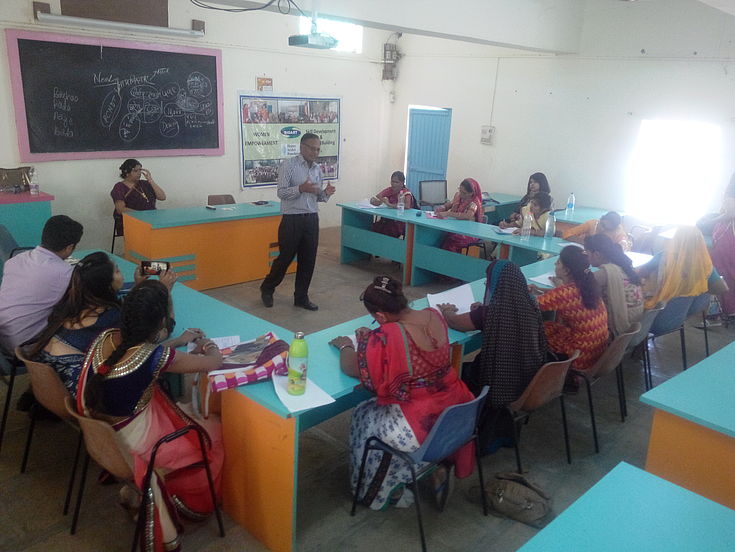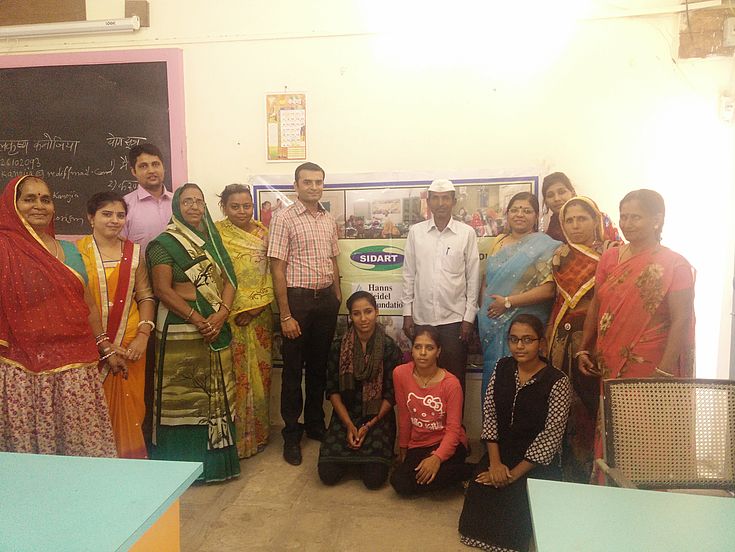News
SIDART's Exposure and Learning Visit to Ralegan Siddhi, Maharashtra
SIDART team members and elected women representatives from Sanganer and Jaipur districts of Rajasthan visited Ralegan Siddhi under the guidance and leadership of Dr. Pramila Sanjaya.
Adv. Gaikwad taking session on rights and laws for women
Ralegan Siddhi
Ralegan Siddhi is a village in Ahmednagar District of Maharashtra state in western India located at a distance of 85 kilometers from Pune. It is considered a model of sustainable development for the country. The village is located in the rain-shadow area, the annual rainfall is a meager 400–500 mm. Earlier, this village was extremely degraded and unsustainable. The condition of the village was pathetic and awful. The rainwater, which already was scarce, used to run off and get wasted as the land of the village was barren and undulated. There were no means to harvest this precious resource. Whatever rainwater use to get collected was sufficient to cultivate only one crop on 300–350 acres of land out of a total 2200 acres of land available in the village. People had few jobs and were engaged into illegal distilling of alcohol. There were large scale migrations, ill health and alcohol driven violence especially against women. Now the improved view of Ralegan Siddhi can be seen. Increased agricultural productivity shows the importance of sustainable agriculture.
Participants with Mr. Rajaram Shankar Gajre
Many water harvesting structures have been constructed in the village for conserving water and the villagers also undertook fodder development, continuous contour trenches and loose boulder structures on 500 acres of land. The watershed development work helped in conserving each drop of rainwater in the village itself and in recharging the groundwater aquifers. This ultimately raised the water table. In the same village where earlier it was not possible to cultivate more than 300–350 acres of land for one crop, now the villagers are harvesting two crops in 1500 acres of land. Due to availability of water, the agricultural production has boosted up. The agricultural development has created lot of employment in the village itself. Not only has the distress migration completely stopped, but now wage labourers have to be hired from other villages in order to get various intercultural operations done in time. Ralegan Siddhi has shown the world how the whole system can stand on its own legs from scrap. It not only demonstrates what village people can do when they take control of their own development but also shows their concern to the environment by evolving sustainable practices. (Source: www.annahazare.org)


